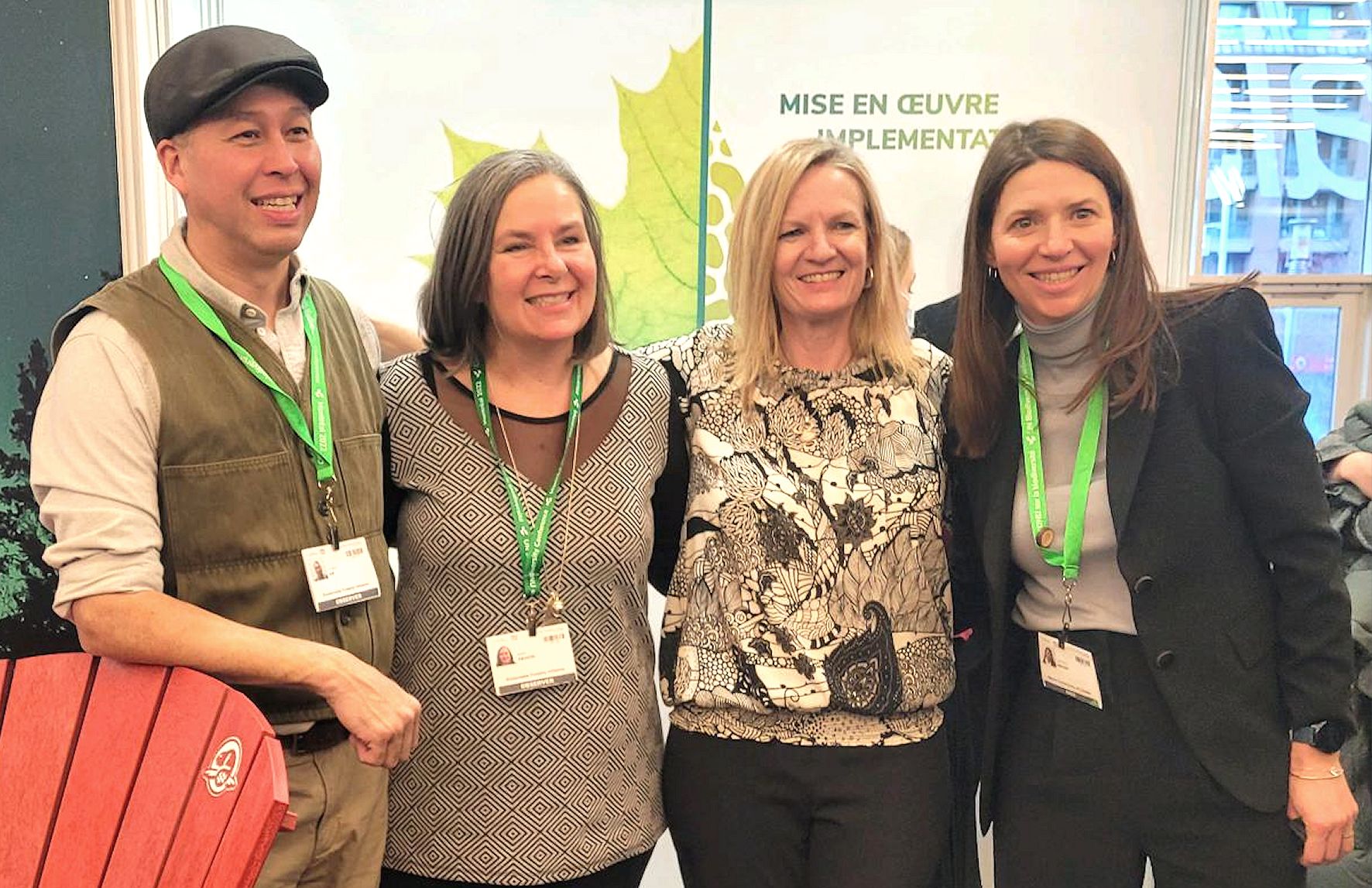A commitment to 30×30, an initiative calling on the world’s governments to designate 30 percent of Earth’s land and ocean as protected areas by 2030, was among four goals and 23 targets for achievement of the 15th Conference of Parties to the UN Convention on Biological Diversity (COP15), which concluded in December. Representatives from nearly 200 nations attended the event, held in Montreal, Canada.
The agreement, known as the Kunming-Montreal Global Biodiversity Framework, was signed by nearly 200 nations. The United Nations conference was chaired by China and hosted by Canada.
“The 30×30 commitment from COP15 is a positive development, and sustainably managed forests can contribute to this through OECMs [other effective conservation measures]. This is an important step toward conservation and sustainable use of our natural world,” said SFI Lead Scientist Darren Sleep, who attended COP15 along with several other SFI staff members. “We look forward to contributing to the target through sustainable management of forests across SFI’s nearly 150 million hectare footprint in North America.”
OECMs are lands and waters that are managed for a primary purpose other than the conservation of nature, but provide the same biodiversity conservation benefits as protected areas.
Sleep participated in a panel discussion on forests hosted by the Canadian Wildlife Service Branch of Environment and Climate Change Canada.
Leo Viana, SFI Vice President, Conservation Collaboration, said he valued discussions at COP15 regarding an increased focus on leveraging environmental DNA (eDNA) to more easily assess environments. The technique lets scientists detect elements of a species’ genomes in small samples of soil, water, and air. Sources of eDNA can include shed skin cells, feces, hair, reproductive secretions, and other sources with traces of genetic material.
“In addition to some great discussions on a range of biodiversity topics, including a call for sustainable forestry and the use of biodiversity friendly practices, the importance of environmental DNA was highlighted as a key to getting a more complete picture of biodiversity,” said Viana. “We can more easily assess the biodiversity of habitats, natural communities, and ecosystems—eDNA has the potential to provide information on species distribution, biomass, and relative abundance in aquatic and terrestrial environments.”
Notably, a current SFI Conservation Grant funded project is using eDNA to assess the impact of sustainably managed forests on pre- and post-fire aquatic species assemblages in the Northwestern United States.

SFI at COP15 (left to right): SFI Board of Directors member Lennard Joe, CEO of the BC First Nations Forestry Council; Kathy Abusow, SFI President and CEO; SFI Board of Directors member Dr. Tracy Farrell, Director of International Union for Conservation of Nature North America and CEO of IUCN-US; and SFI Board of Directors member Catherine Grenier, President and CEO of Nature Conservancy of Canada.
Kathy Abusow, SFI President and CEO, participated in a World Business Council for Sustainable Development panel, where she discussed the role of forest certification in nature-positive solutions and the Taskforce on Nature-related Financial Disclosures. The taskforce’s mission is to develop and deliver a risk management and disclosure framework for organisations to report and act on evolving nature-related risks, with the ultimate aim of supporting a shift in global financial flows away from nature-negative outcomes and toward nature-positive outcomes.
Also participating at COP15 were Dr. Tracy Farrell, Director of International Union for Conservation of Nature North America and CEO of IUCN-US; SFI Board of Director members Catherine Grenier, President and CEO of Nature Conservancy of Canada; and Lennard Joe, CEO of the BC First Nations Forestry Council.
The COP15 framework’s four overarching global goals are:
GOAL A
- The integrity, connectivity, and resilience of all ecosystems are maintained, enhanced, or restored, substantially increasing the area of natural ecosystems by 2050;
- Human induced extinction of known threatened species is halted, and, by 2050, the extinction rate and risk of all species are reduced tenfold, and the abundance of native wild species is increased to healthy and resilient levels;
- The genetic diversity within populations of wild and domesticated species is maintained, safeguarding their adaptive potential.
GOAL B
Biodiversity is sustainably used and managed, and nature’s contributions to people, including ecosystem functions and services, are valued, maintained, and enhanced, with those currently in decline being restored, supporting the achievement of sustainable development, for the benefit of present and future generations by 2050.
GOAL C
The monetary and non-monetary benefits from the utilization of genetic resources, digital sequence information on genetic resources, and traditional knowledge associated with genetic resources, as applicable, are shared fairly and equitably, including, as appropriate with indigenous peoples and local communities, and substantially increased by 2050, while ensuring traditional knowledge associated with genetic resources is appropriately protected, thereby contributing to the conservation and sustainable use of biodiversity, in accordance with internationally agreed access and benefit-sharing instruments.
GOAL D
Adequate means of implementation, including financial resources, capacity-building, technical and scientific cooperation, and access to and transfer of technology to fully implement the Kunming-Montreal Global Biodiversity Framework are secured and equitably accessible to all Parties, especially developing countries, in particular the least developed countries and small island developing States, as well as countries with economies in transition, progressively closing the biodiversity finance gap of $700 billion per year, and aligning financial flows with the Kunming-Montreal Global Biodiversity Framework and the 2050 Vision for Biodiversity.
